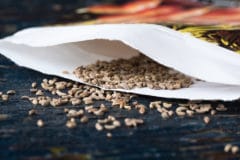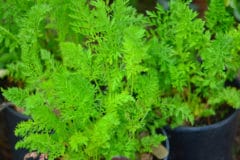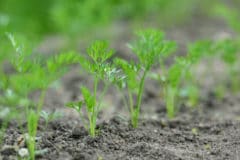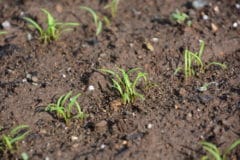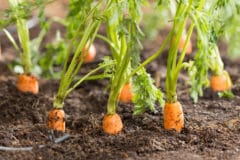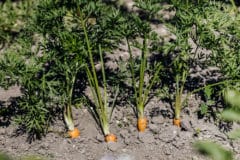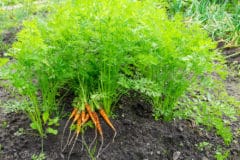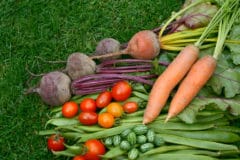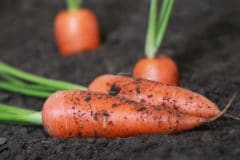Start with the Soil
The first thing to do to ensure your carrots get a good start in life is to pick a spot that gets full sun, or almost full sun; carrots need a great deal of sunshine. Once you’ve designated a good spot for your carrot patch, make sure the soil is properly prepared to receive seeds.
- Thoroughly weed your chosen planting area.
- Till the soil deeply. Eight inches is he minimum depth you want.
- To ensure that your soil is as loosely packed and well drained as possible, work in some sand.
- Pick out all the rocks and other obstacles you can find. Dig deep for these; they can stunt your carrots’ growth.
- Work in a fertilizer that has plenty of potassium, but little to no nitrogen. Potassium encourages root growth, and carrots are a root; nitrogen feeds foliage, which can limit the grown of the root
- Do not use any compost or fertilizer that includes manure. Manure is known to fork and stunt your carrots.
Pick the Right Seeds
Some carrots are more likely to grow large. Try planting Chantenay carrots, which tend to be shorter but thicker than other varietals. You can also consider Touchon and Hercules carrots. Do a little research into the options and find a carrot that can be all you want it to be.
Keep Them Wet!
Carrots need water to grow well. Mulching after planting can help, holding in the moisture needed for germination. As your carrots grow, especially through the summer months, be sure to water well and regularly. You’ll be glad you did.
Let Them Grow
Carrots can be harvested after about three months of growing, but it’s not necessary. Consider leaving your crop in the ground for a longer period of time. There are three good reasons for this: First, the carrot will continue to grow as long as it’s in the dirt. Second, leaving mature carrots in the ground is a great way to store them; unlike may other crops, carrots don’t need to be harvested immediately. Third, carrots taste better after a couple of frosts, because the cold weather sends the plant’s natural sugars to the roots, making them sweeter.

